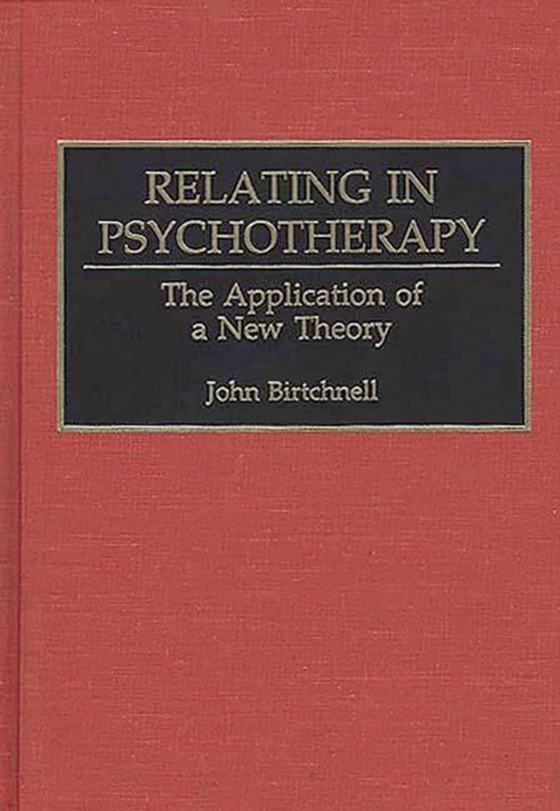
Relating in Psychotherapy e-bog
619,55 DKK
(inkl. moms 774,44 DKK)
In his earlier book, How Humans Relate, John Birtchnell proposed that relating occurs along two axes, a horizontal one concerning becoming close versus being distant and a vertical one concerning being upper versus being lower. He called closeness, distance, upperness, and lowerness the relating objectives, and he proposed that people need to acquire competence in attaining and maintaining thes...
E-bog
619,55 DKK
Forlag
Praeger
Udgivet
28 februar 1999
Længde
288 sider
Genrer
Social, group or collective psychology
Sprog
English
Format
pdf
Beskyttelse
LCP
ISBN
9781567507133
In his earlier book, How Humans Relate, John Birtchnell proposed that relating occurs along two axes, a horizontal one concerning becoming close versus being distant and a vertical one concerning being upper versus being lower. He called closeness, distance, upperness, and lowerness the relating objectives, and he proposed that people need to acquire competence in attaining and maintaining these objectives. In this book, he argues that the task of psychotherapists is to identify and correct, within these axes, people's relating incompetencies, and to enable people to cope with the relating incompetencies of others. He considers this to be the case across all psychotherapies.Dr. Birtchnell proposes the existence of an unconscious, automatic, inner brain that monitors the relating objectives. He argues that the psychotherapist assists the person, through the conscious, outer brain, to correct and improve the inner brain's least effective relating strategies. He uses the term interrelating to describe the interplay between the relating of two or more people. This has application in couple, family, group, and community therapy, in which the psychotherapist's task is to enable the interrelaters to understand and correct their mutually reinforcing, destructive interactions. He introduces a set of questionnaires, from the scores of which a computer can print out an easy-to-read diagram of the direction and degree of people's relating incompetencies.
 Dansk
Dansk

